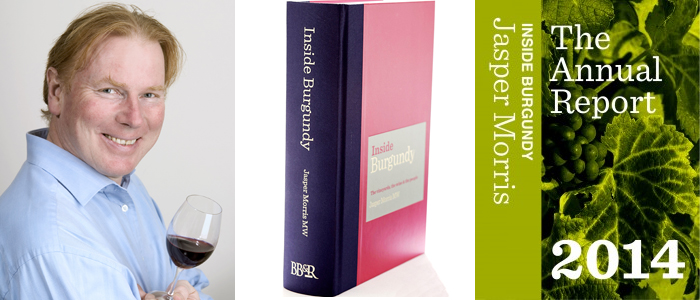Breaking news from Burgundy
Author: Jasper Morris MW
Special Report: Premox – the premature oxidation of white wines
“Premature Oxidation, Premox – or indeed just plain Pox. These terms cover the imperfectly-understood incidence in recent years of unduly advanced, sometimes completely oxidised bottles of wine, especially white Burgundy. In this year’s Special Report, I examine the probable causes, summarise the debate and present some tentative conclusions. Don’t throw away those bottles – yet…
The issue of premox is frustrating not just because of the significant numbers of underperforming or indeed undrinkable bottles, but also because we don’t know the causes for certain, or the extent of it – neither the size of the problem within Burgundy, nor to what extent it affects other wine styles and regions. Or indeed for how much longer we are likely to be afflicted.
There are too many factors at play. Some are measurable and correctable, others a matter for conjecture. Even those seemingly based in wine science are capable of different and opposing interpretation. The following is a summary of what I have understood from a mixture of my own experience, talking to producers and reading other views on the subject.
I would like to thank Nigel Groundwater and Toby Morrhall, among others, for their helpful input.
Timeline
Steve Tanzer, in his International Wine Cellar newsletter, was perhaps the first wine critic to raise the issue publicly in 2002. Since then Allen Meadows has provided useful reports on the pox in his Burghound newsletters, and while I don’t agree with all his thoughts, these articles do supply a useful retrospective timeline on how the story broke. He also first mentions it in 2002 (Issue 8) and even in Issue 16 (October 2004) the tone of his article is that it the problem relates to a few bottles rather than to particular producers or indeed the industry as a whole. But by Issue 20 (October 2005) his view has changed and he is taking it seriously as a major scourge. Annual reports thereafter continue to bemoan the problem while providing insights into the latest theories.
The first vintage which really showed a problem was 1996, though subsequently it became clear that 1995 was also implicated. Another major source of information, oxidisedburgs. wikispaces.com, has the timing the other way round. The end of the story is not as yet clear either: I am not yet ready to offer a clean bill of health, though many individual producers who were affected have taken significant steps to resolve the problem at their specific domaines. The risks attached to particular vintages are discussed in the section entitled Vintage Variations.
The question of how and why premature oxidation emerged so rapidly remains tantalisingly unanswered. If we could more clearly identify the causes, perhaps the timing would be explained as well. Possible part explanations will emerge during the course of the discussion…”
To read Jasper’s full investigation into premature oxidation, you can download the annual report in eBook form (to iPads or Mac computers) on 22 November from the iBookstore (£9.99 https://itunes.apple.com/gb/artist/jasper-morris/id576437203?mt=11)




I wish to purchase a copy of Jasper Morris’ Burgundy book together with a hard copy of the 2014 report.
Am I able to purchase both items if I call in at your premises
Please
Regards
Keith Cattermole